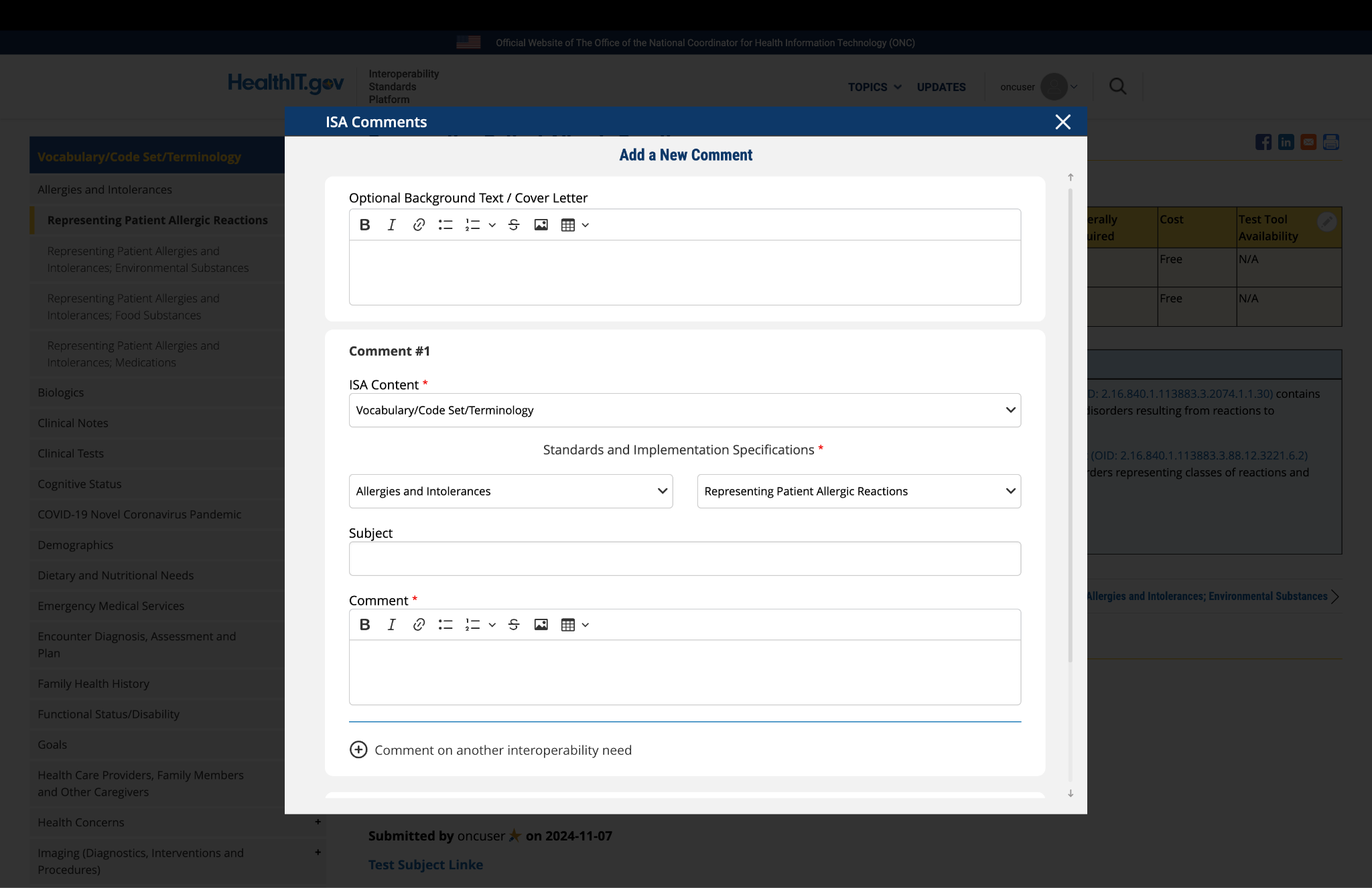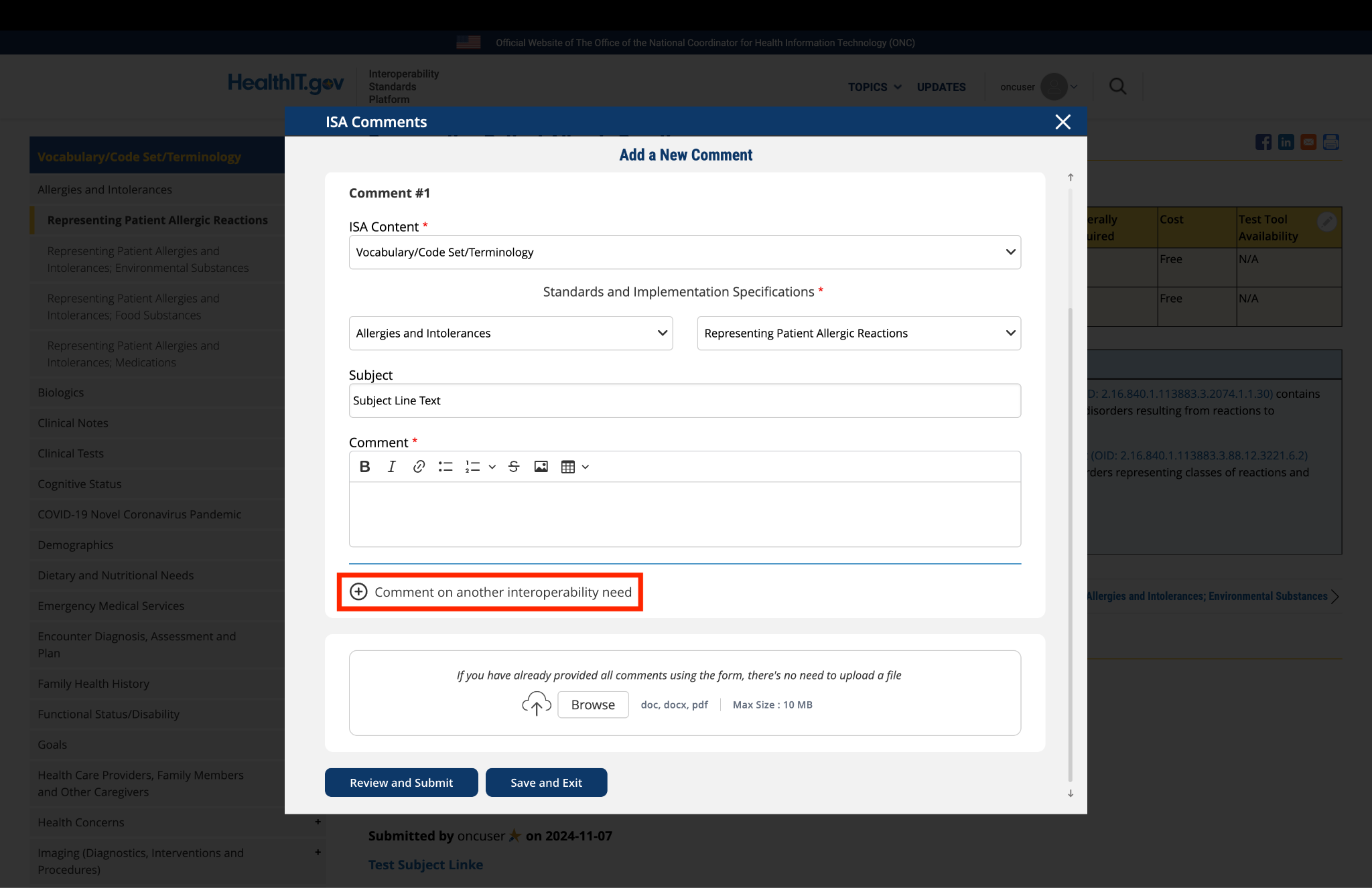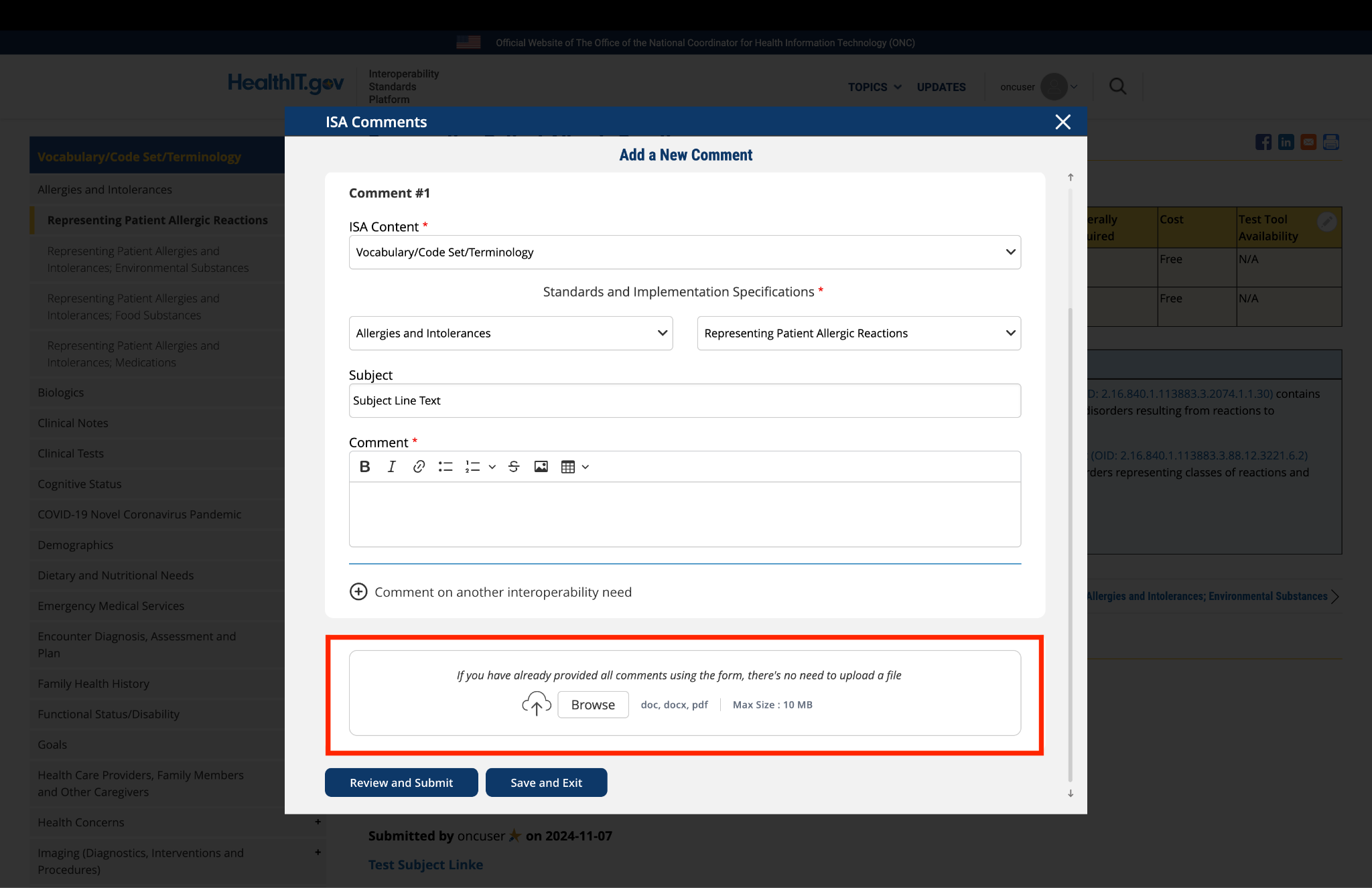| Type | Standard / Implementation Specification | Standards Process Maturity | Implementation Maturity | Adoption Level | Federally required | Cost | Test Tool Availability |
|---|---|---|---|---|---|---|---|
|
Standard
|
Final
|
Production
|
Yes
|
Free
|
N/A
|
| Limitations, Dependencies, and Preconditions for Consideration |
Applicable Value Set(s) and Starter Set(s)
|
|---|---|
|
Diagnosis and Conditions:
For genomic data:
For family relationships and roles:
|
Comment
Submitted by mattreid on
The AMA requests that the…
The AMA requests that the Current Procedural Terminology (CPT) code set be added to the standards listed in Section I: Representing Patient Family Health History. The CPT Evaluation and Management codes specifically address capturing the patient’s family health history. The E/M codes specifically provide information about:
- The health status or cause of death of parents, siblings, and children;
- Specific diseases related to problems identified in the chief complaint or history of the present illness, and/or system review
- Diseases of family members that may be hereditary or place the patient at risk
Also, CPT code 96040 identifies medical genetics and genetic counseling services.
CPT is a comprehensive and regularly curated uniform language that accurately describes medical, surgical, and diagnostic services and provides for reliable communication among users. It has an extremely robust and mature development process with open and transparent meetings and clinical input from national medical specialties and relevant stakeholders. It is the most widely adopted outpatient procedure code set. Use of the CPT code set is federally required under HIPAA.
Submitted by ssvaby on
Wrong code system referenced for Problem Type
2.16.840.1.113883.3.88.12.3221.7.2 - this code system is not LOINC as referenced above...it is SNOMED.
Submitted by vojtech_huser on
feedback
Consider adding the following info to starter set
OMOP common data model is using SNOMED CT concepts (descendants of SNOMED CT term 125677006 (http://snomed.info/id/125677006)) to standardize family relationships (reference: https://github.com/OHDSI/CommonDataModel/wiki/FACT_RELATIONSHIP#conventions ).
Submitted by cmcdonald on
Standard for observation…
Standard for observation values: should probably be Standard for observation values that are represented as codes (won't apply if they are free text or numbers).
Many of the details of Family Genomic History are not capturable by SNOMED CT. They will require the code systems provided by NCBI such as ClinVar, dbSNP, etc.
This is a greatly exaggerated assessment in the CMS Assessments. A large provider of IHE interfaces see SNOMED CT codes for 5% or fewer variables with multiple choice answers. Most are either text and/or local codes.
Submitted by gdixon on
Are the value sets in ISA accounting for the decisions and imple
- Personal Relationship Role Type” Personal Relationship Role Type urn:oid:2.16.840.1.113883.1.11.19563
- There is a discrepancy between this value set and FHIR 4.0. More generally are the value sets in ISA accounting for the decisions and implementations being made with FHIR?
- Definition:
- A relationship between two people characterizing their "familial" relationship
- OID: 2.16.840.1.113883.1.11.19579 (for OID based terminology systems)
- Title: V3 Value SetFamilyMember
- Name: v3.FamilyMember
- Defining URL: http://terminology.hl7.org/ValueSet/v3-FamilyMember
- Definition:
Submitted by mcpatric on
NCBI genomic data resources
NCBI resources for sequences, including RefSeq, dbVar, and dbSNP, can be found here:
https://www.ncbi.nlm.nih.gov/guide/all/
Submitted by kwboone on
Need code system for family…
Need code system for family relationships, SNOMED CT and HL7 V3 Personal Relationship have good value sets for this.








Submitted by gldickinson on
Preserving Clinical Context
General Comments:
USCDI specifies lots of clinical data classes and data elements
It is crucial to consider and determine/resolve how clinical content and context are bound together and preserved in USCDI. The ultimate end user (often a clinician) must be able to readily discern context and inter-relationships – otherwise USCDI places an undue (and often unresolvable) burden on this user. Only the source EHR/HIT system can structure clinical content and context properly. Once data is stuffed into the USCDI framework and related exchange artifact (e.g., FHIR resources) this opportunity is forever lost.